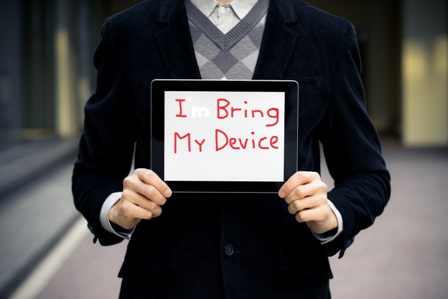As much as half of companies worldwide will have bring your own device (BYOD) policies in place by 2017, according to technology research firm Gartner Research.
In about three year, some 38 per cent of businesses are expected to stop providing devices to their workers, Gartner said. Still, the report found, while most leaders understand the benefits of BYOD, only 22 per cent of IT executives interviewed by the firm believe they have made a strong business case for adopting the trend.

“Mobile initiatives are often exploratory and may not have a clearly defined and quantitative goal, making IT uncomfortable,” David Willis, VP at Gartner. “If you are offering BYOD, take advantage of the opportunity to show the rest of the organization the benefits it will bring to them and to the business.”
He said the benefits of BYOD include: creating new mobile workforce opportunities, increasing employee satisfaction, and reducing or avoiding costs. BYOD drives innovation for CIOs and the business by increasing the number of mobile applications users in the workforce.
RELATED CONTENT
Gartner offers BYOD tips to Canadian CIOs
BYOD led to security breaches, study shows
Gartner’s survey found that BYOD practices are being adopted in companies and government offices of all sizes but is most prevalent in midsize and large organizations.
“The enterprise should subsidize only the service plan on a smartphone,” said Willis. “What happens if you buy a device for an employee and they leave the job a month later?”
“Better to keep it simple. The employee owns the device, and the company helps to cover usage costs,” he said.
Security is still a top concern for IT executives dealing with BYOD.
IT should specify which platforms will be supported and how; what service levels a user should expect; what the user’s own responsibilities and risks are; who qualifies; and that IT provides guidelines for employees purchasing a personal device for use at work, such as minimum requirements for operating systems, the report said.
More than half of organizations rate themselves high in security of corporate data for enterprise-owned mobile devices. This reflects availability of more mature tools and processes addressing mobile security.
“We are finally reaching a point where IT officially recognizes what has always been going on: People use their own business devices for non-work purposes and they often use personal devices for business,” Willis said. “Once you understand, you’ll understand you need to protect data in another way besides locking down the full device.”